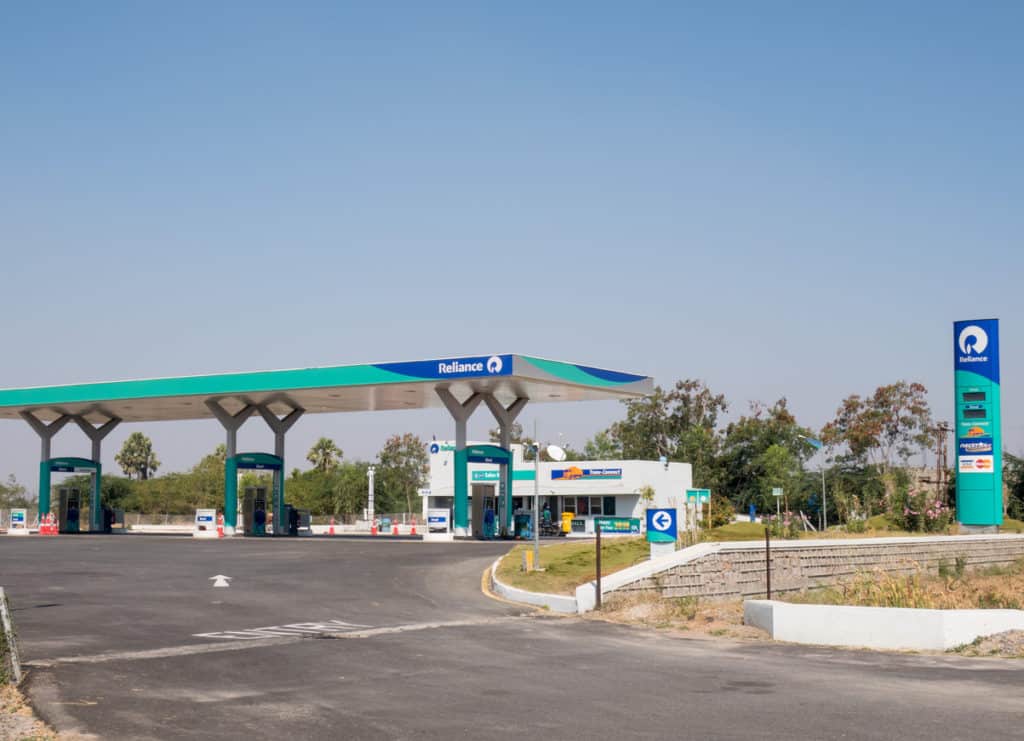- Introduction
- The early life of Mukesh Ambani
- Mukesh Ambani’s education
- The rise of the Reliance empire
- The split of the Reliance empire and Mukesh’s zest to rise
- Fortune favors the brave: How Jio became a powerhouse
- Mukesh Ambani’s awards and accomplishments
- Concluding thoughts
Introduction
“Every small business and entrepreneur has the potential in India to become Dhirubhai Ambani or Bill Gates. And that is the power that is what differentiates India from the rest of the world,” was quoted by Mukesh Ambani during one of his talks with Microsoft CEO Satya Nadella.
According to Forbes, Mukesh Ambani is the richest person in Asia with a net worth of $ 87.4 billion and the 13th richest person in the world, as of today (June 2021). But, how many of you know that he was an MBA dropout from the famous Stanford University?
Yes, you read it right. Mukesh Ambani dropped out of his Stanford University MBA program to help his father build Reliance, which was then a small fast-growing enterprise.
Let’s dive into the life of Mukesh Ambani and read about his roadmap from an MBA dropout to a billionaire.
The early life of Mukesh Ambani
Mukesh Dhirubhai Ambani was born on 19 April 1957 in the British Crown colony of Aden, a place that is currently called Yemen. In 1958, his family moved back to India to start a trading business that focuses on textiles and spices. The textile company was initially named ‘Vimal’ and later was renamed as ‘Only Vimal.’
Mukesh Ambani’s education
Ambani attended Hill Grange High School in Mumbai. He received a Bachelor’s degree in Chemical Engineering from the Institute of Chemical Technology. He later enrolled for an MBA degree at Stanford University but dropped out in 1980 as his father felt that real-life skills teach more than what a classroom can teach.
The rise of the Reliance empire
In 1981, right after he dropped out of the MBA program, he started to help his father (Dhirubhai Ambani) to run their family business – Reliance Industries Limited. Mukesh was handed over the command of a yarn manufacturing project. The company had already extended its arm to refining and petrochemicals by this time.
Mukesh helped his father set up the Polyester Filament Yarn (PFY) manufacturing plant. He assisted in designing a backward integration system that made the company own its suppliers, which led to an improvement in efficiency and generated more revenue. Dhirubhai treated his son as his partner and also gave him the freedom to make decisions.
In 1986, Dhirubhai suffered a stroke, and the responsibilities of running the company shifted to Mukesh and his brother. In the same year, Mukesh was responsible for setting up Reliance Infocomm Limited (now known as ‘Reliance Communications Limited’). He took over the charge of the Patalganga Petrochemical Plant’s construction. The company was heavily investing in the oil refinery and petrochemicals then, and it was a huge responsibility for him.
The split of the Reliance empire and Mukesh’s zest to rise
In 2002, after the sad demise of his father, the Reliance empire was split into two. Mukesh took over the Indian Petrochemicals Corporation Limited and Reliance Industries Limited. Mukesh was highly ambitious and did not stop at what he had. He slowly planned the timeline of his progress.

Mukesh Ambani directed and spearheaded the creation of the world’s biggest grassroots petroleum refinery. The plant was set up at Jamnagar (India) and could produce 660,000 barrels a day, roughly amounts up to 33 million tonnes per year, as per Wikipedia.org. Ambani had also implemented the plant’s integration with petrochemicals, power generation, port, and related infrastructure.
Fortune favors the brave: How Jio became a powerhouse
The Ambani empire split in 2005 was one of the biggest demergers in the industry. During the partition, Reliance Infocom, which was Mukesh Ambani’s dream project, was handed over to the Anil Ambani group. Mukesh was disheartened due to this decision. But that did not stop him from making his name in the telecom industry.
As per Economic Times, in 2010, Mukesh Ambani-owned Reliance Industries bought a 95% stake in Infotel Broadband for INR 4800 crore. At that time, Infotel broadband was the only firm to have secured the broadband spectrum in all 22 zones in India. This strategic purchase marked the entry of Mukesh into the telecom sector.
In 2013, ‘Infotel Broadband Services Limited’ was renamed as ‘Reliance Jio Infocomm Limited’. The Reliance Jio 4G services were launched internally on 27th December 2015 and were commercially launched on 5 September 2016. Initially, the subscribers were given unlimited data and voice services till 31 December which was later extended to 31 March 2017.

Mukesh had planned this strategic move of giving free unlimited 4G data and voice calls to garner more subscribers. It turned out to be a success as Jio reported more than 1.6 crore subscribers in its first month, and crossed 5 crore subscribers in just 83 days. And that did not stop there. It subsequently crossed 100 million subscribers in Feb 2017, and by October 2017 it had a staggering 130 million subscribers.
His strategy did not end in obtaining more subscribers. He timelined his progress and forged partnerships with organizations to become the giant in the telecom sector. And throughout his journey, he had a vision in mind.
| Year | Company | Reason |
| 2014 | Airspan Networks | Airspan has a small cell network that provides the needed coverage and capacity to deliver high-speed broadband data, voice, and digital services. |
| 2015 | Airhop Communications | The eSON360 self-healing technology can be utilized by Jio for its towers. |
| 2016 | BSNL | The intra-circle roaming BSNL provides can be used by Jio to enable users of the operators to use each other’s 4G and 2G spectrum in national roaming mode. |
| 2017 | Samsung | To work together on LTE- Advanced Pro and 5G |
| 2017 | Ciena | To deploy multi-terabit converged packet optical solutions deliver new high-speed, reliable connectivity enabling Jio to offer 4G services across India |
| 2020 | Cisco Systems | To deploy 5G network in India |
| 2020 | HFCL | To roll out Fiber-optic communication that rollouts of FTTx services. |
In 2020, the world’s biggest tech companies like Facebook and Google started showing interest in the fast-growing Jio platform. As per Economic Times, Facebook announced their investment of $5.7 billion (Rs 43,574 crore) in Jio platforms, making it the biggest investor in the Jio venture. Google was not far behind, and in a matter of a few weeks, they announced their Rs. 33,737 crore investment in Jio.
The way Mukesh had made Jio a powerhouse from literally having nothing on his side is a story that screams success on its way.
Mukesh Ambani’s awards and accomplishments
Apart from the wealth, Mukesh has various awards and honors to his name.
| Award/ Honor | Year | Awarding Organization |
| Ernst & Young Entrepreneur of the Year | 2000 | Ernst & Young India |
| Business Leader of the Year | 2010 | NDTV India |
| Global Leadership Award | 2010 | Business Council for International Understanding |
| Honorary Doctorate (Doctor of Science) | 2010 | M. S. University of Baroda |
| Business Leader of The Year | 2017 | Economic Times |
Concluding Thoughts
The rise of Mukesh Ambani is truly an inspiration for many young entrepreneurs in India. The innumerable struggles, compromises, sleepless nights, strategic planning, and many more attributes contributed to where Mukesh is right now. He has risen to a position where many people could only dream about. His success is a true eye-opener for every zestful individual who wants to succeed in professional life.
Maybe, if Mukesh Ambani had a flexible online MBA program, he would have had the chance to complete his degree. The current generation is at an added advantage as there have been a lot of online MBA programs available in the industry right now that can help you work and upskill at the same time.
If you’re on the hunt for a flexible MBA program, then the Online MBA Degree Program by JAIN (Deemed-to-be University) can be the right fit for you. The program also offers live virtual classes and gives professionals the space to manage their work and learning schedules effectively. Do not let this opportunity slip away. Stay updated for more of our blogs.








